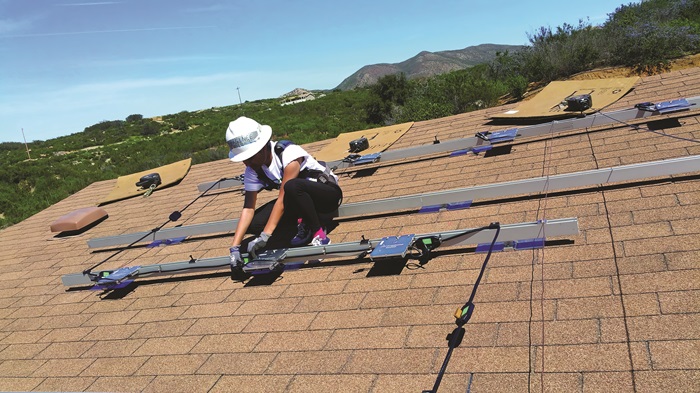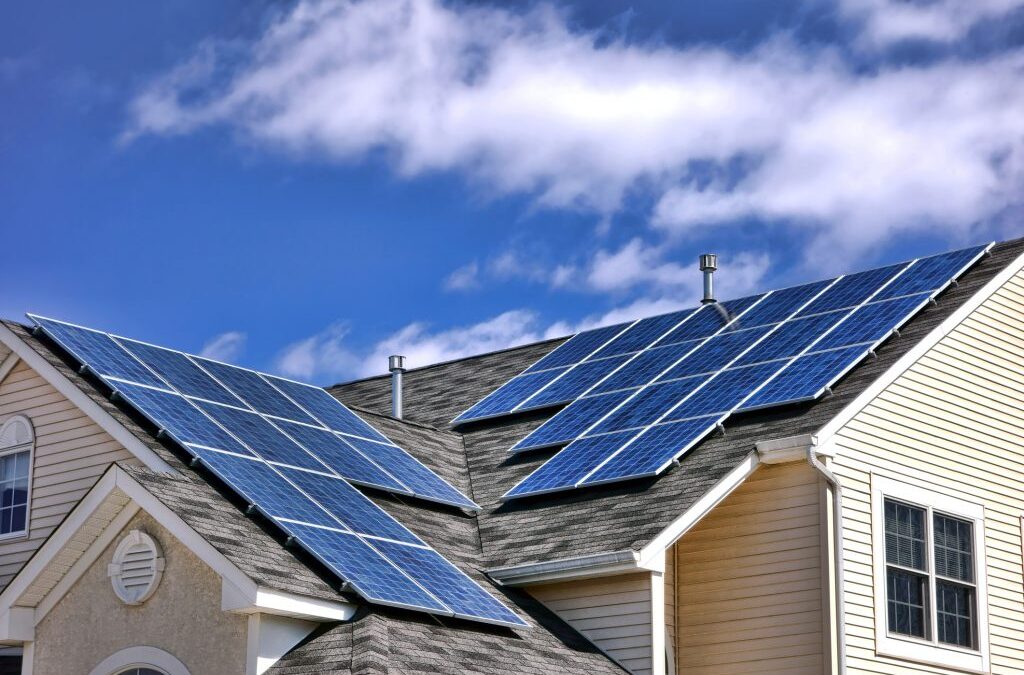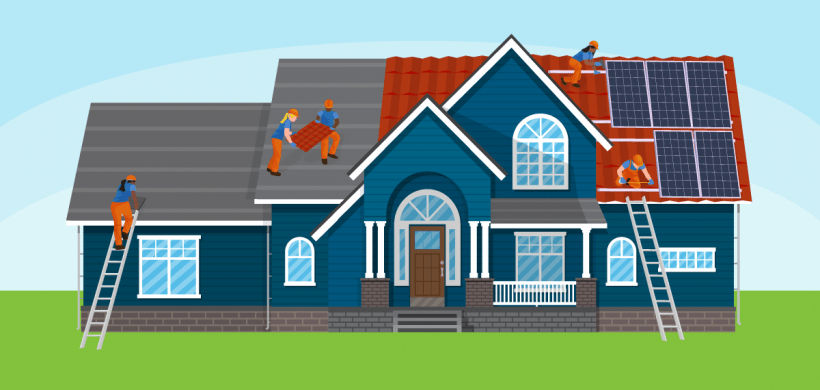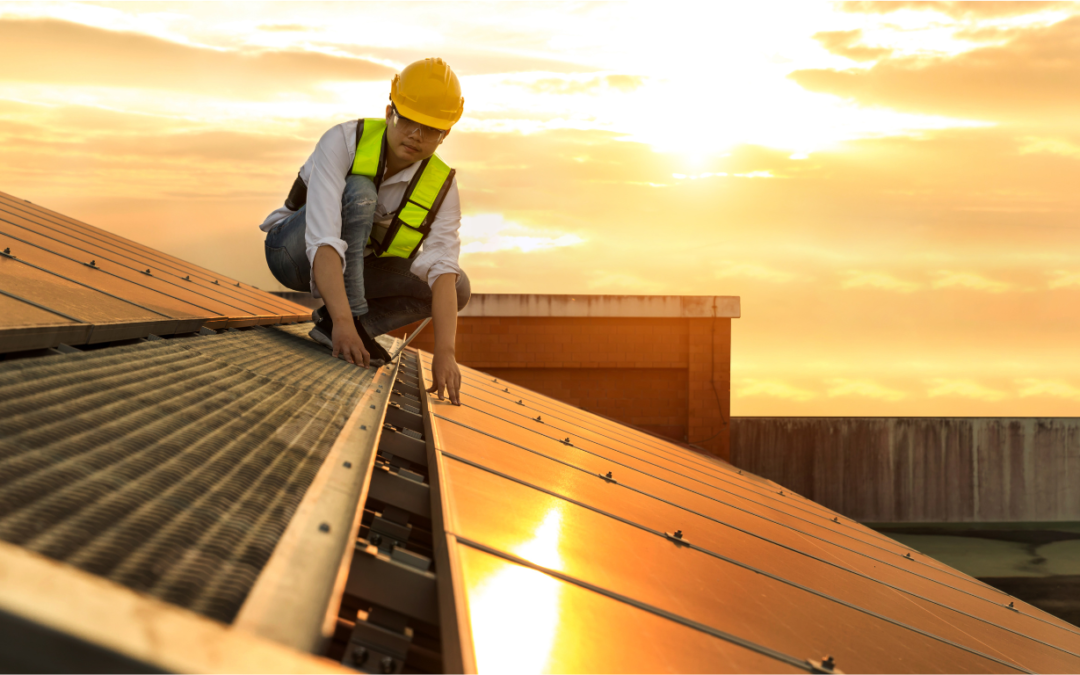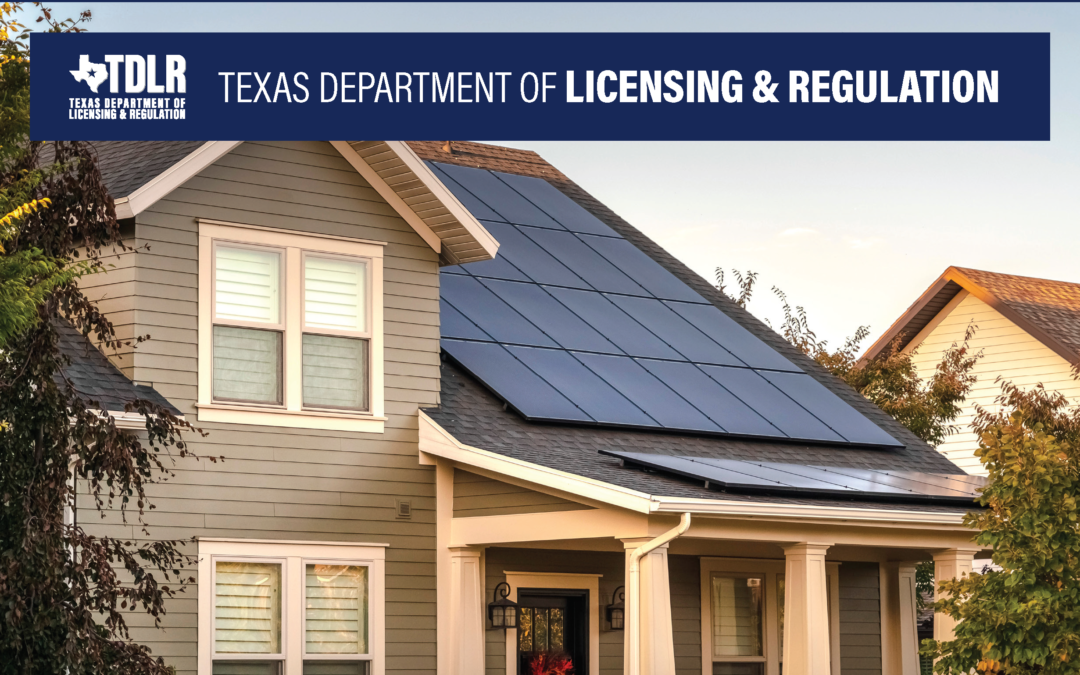
Apr 15, 2024 | News, Txses Impact, Consumer Confidence
“There are a lot of great solar installers in the industry who provide reliable products to build affordable arrays with quality and skill. However, from time to time, we hear reports of the ‘other guys’ – the companies that are in it to make a quick buck and move on to the next sale.”
TXSES Executive Director Patrice “Pete” Parsons co-authored the Op-Ed, “Protecting Yourself from the ‘Other Guys’“ on what to watch out for when getting solar panels installed in Solar Today magazine with Roger Horowitz (Solar United Neighbors) and Rich Strömberg (ASES Photovoltaics Division).
Warranty service or Operations & Maintenance? These may be lacking or nonexistent.
Solar arrays that miss the energy production estimates by a significant margin? These can leave well-intentioned array owners with a bad experience.
While this is not the norm, we want to caution would-be solar-array owners and provide pathways to prevent poor customer satisfaction.
Some recent anecdotes about poorly installed solar that we are personally aware of include the following:
1) A woman purchased a home with a preexisting leased solar array that was installed on an older roof. The original installer should have advised the prior homeowner to get a new roof before installing an array that would undoubtedly require removal and reinstallation before the end of the 25-year PV module warranty period.
That installer went out of business, but a new company bought the lease and now wanted to charge the woman a lot of money to remove the array for the roofers to do their work and then reinstall the system. They quoted her a price for the work equal to buying a brand-new solar array.
Since the lease company owned the array, they wouldn’t let another installer do the work at a lower cost. The homeowner was also offered a buyout of her remaining lease at a price much higher than the current value of her PV system.
2) A company installed solar panels on any available roof space instead of focusing on unshaded roof space that would have a good power-production factor.
3) A commercial solar array was mounted horizontally (instead of at an angle) on a flat roof in Florida where rainwater was allowed to pool on the modules and seep behind the front-side glass, causing rippling of the ethylene vinyl acetate encapsulant film and allowing algae to grow between the glass and the silicon cells.
Further, the inverters were mounted outside, which resulted in the ventilation fans pulling in corrosive, salty sea air into the sensitive internal electronics. This system stopped working and the customers did not have a good solar experience.
4) A commercial array in Colorado had a building owner who had a third-party power purchase agreement and was billed regularly for the supposed solar production despite the system not producing.
The installer had not worked to repair the offline inverters for more than a year, but was providing a fraudulent bill to the building owner, who was double-paying for electricity.
5) A large, extremely reputable national solar company worked with a company that was providing it sales leads in the Houston area. After the large company had installed a system based on one of these leads, the customer didn’t understand why her bill was not zero.
She had been promised by the salesperson that her solar array would cover her entire electric bill. She didn’t have a clear understanding of the contract and certainly didn’t understand the credit that would be paid to her.
When the solar company heard about all the promises that had been made on their behalf, they went back and repaid her the entire amount of the system, which was fortunate for her in this case, but there are plenty of examples of these poor practices happening across Texas.
While several of these anecdotes relate to leased arrays, this is not to say that all leased arrays should be avoided. In many larger commercial arrays, any system larger than what is allowed for net metering (typically larger than 25 kW) is frequently owned by a solar company that operates and maintains the system and sells the power produced to the building owner at a rate less than the utility retail rate.
Residential lease arrays might be an attractive option for homeowners who don’t want to buy or finance their own systems. The primary considerations for leased arrays are 1) to be cognizant that the lease is an encumbrance should the homeowner wish to sell their home before the end of the lease period and 2) to seek transparency about the energy produced and system health/performance.
What are the costs to buy out the lease early? Are there penalties to an installer if the system underperforms? What are the costs and logistics if the array needs to be removed for roof repairs? These factors might cause a prospective solar array owner to revisit a home equity loan or even forego a solar array until a later date.
Inspired by the Inflation Reduction Act of 2022, lots of folks are interested in installing solar all over the country. Along with reputable solar companies, there are plenty of solar scams and misleading solar advertisements out there, particularly on social media. Here are several pathways a prospective solar-array owner can follow to protect their interests and ensure the best possible option based on their particular needs.
1) You should beware of ads and salespeople claiming free systems or a time-limited program that you need to sign up for immediately.
2) Some companies are counting on you not doing your research and selling expensive systems or systems without warranties. Do you really need an array this large? Is a battery/energy storage system actually needed if the local utility doesn’t have time-of-use rate structures?
Time-of-use rates are used when an electric utility charges a higher per-kWh rate at times each week when energy demand is high and lower rates when demand is low.
A battery energy storage system can help the array owner draw excess power from the battery rather than from the grid during high-usage-rate periods. The system can also push excess power back onto the grid during high-usage-rate periods and use nighttime power from the grid to recharge the battery when usage rates are low.
2) Solar United Neighbors (SUN) has a National Solar Help Desk (https://www.solarunitedneighbors.org/helpdesk), which provides free support for people looking to go solar. SUN is a 501(c)(3) nonprofit that can help you find local installers and can review solar proposals and contracts free of charge. We and SUN always recommend getting three solar proposals and making sure to check the warranties on the systems to make sure that the installer and manufacturers have a long-term plan to help you if your system isn’t working.
3) In general, we recommend using the monitoring app that comes with your solar systems to track performance. We also advise having a solar professional take a look at your system in person every five years.
4) When it comes to choosing an installer, make sure to read every online review that you can find and call or meet multiple local references from the solar installer. A lack of local references and lack of online reviews is generally a red flag when it comes to solar companies. Scrutinize these online reviews to confirm their legitimacy.
5) Talk with your neighbors who have solar arrays.
6) Lastly, join your local chapter of the American Solar Energy Society (www.ases.org) to network with system owners who can provide advice and share their knowledge.
Best of luck in finding the right solar array for your needs. We love our systems and want the same for you.
About the Authors
Roger Horowitz is the director of Go Solar Programs at Solar United Neighbors, where he combines his passion for community organizing with his love of solar energy. He loves supporting families as they go solar and is especially interested in equitable financing.
Patrice “Pete” Parsons is a seasoned strategist with more than two decades of experience. She is the executive director of the Texas Solar Energy Society, where she creates programs to educate and inspire every Texan to adopt solar energy as part of an equitable 100%-clean energy future. She is a member of the American Solar Energy Society (ASES).
Rich Strömberg is the vice chair of the ASES Photovoltaics Division. He is a doctoral student focusing on the reuse of solar photovoltaic systems for social and ecological benefit. He is a co-founder and the director of Equitable Solar Solutions.™
Photo Credit: Laksh Muchhal, U.S. Department of Energy, Flickr

Mar 15, 2024 | News, Solar News of Note, Txses Impact, Consumer Confidence
by Patrice ‘Pete’ Parsons, TXSES Executive Director
According to a recent Forbes article, nearly 90% Of Americans couldn’t be more ecstatic about their rooftop solar system. In fact, some 83% of those homeowners are raving to friends and family about how happy they are. They installed them for a variety of reasons: energy independence (with batteries); cost savings; environmental concerns. You might even know some of these people. You might even be one of them.
But for those who don’t or who might be in the market for rooftop solar, it’s caveat emptor (buyer beware). The onus is on YOU, the consumer, to do due diligence before you buy. The decreasing costs of solar panels have made them increasingly affordable.
And because the decreasing cost of solar panels is making them more affordable, solar scams are becoming more prevalent nationally and here at home. Currently, the Texas distributed solar industry is experiencing consumer fraud. There have been many reports of uninformed consumers conned into buying systems they can’t afford, promised pie-in-the-sky results: no electric bills! Free electricity! The adage if it’s too good to be true comes to mind, pay attention. It probably is.
As TXSES is the state’s only non-profit that promotes distributed solar, we require all TXSES business members to sign a code of conduct and ethical requirements. We believe this practice creates an environment with values that reflect honest, ethical business principles and rules of behavior that are consistent with TXSES organizationally, contributing to the welfare of all our stakeholders, and respecting the rights of all constituents affected by our work.
We’re very much aware of nefarious practices by some solar salespeople. You can trust TXSES business members to be professional and install all equipment safely and in compliance with all applicable rules, laws and regulations. We’ve got resources for consumers who are interested in going solar on the TXSES website. And check out the the SEIA Instagram post below for more timely information about consumer confidence when shopping for solar.
I’ve also been meeting with stakeholders and other statewide nonprofits to address this situation and we’re committed to developing solutions that will guarantee consumer confidence in solar rooftop installations.
If you’re interested in becoming a TXSES business member, contact Steven Ùgalde at sugalde@txses.org
On a personal note, I want to bid a heartfelt adieu to a great friend and colleague, Jane Pulaski, who has decided to retire…again. She’s been TXSES’ Director of Communications since I became Executive Director of TXSES in 2020. In that time, she’s worked tirelessly to help me build upon Lucy Stolzenberg’s legacy by writing grants, updating the website, developing newsletters and anything else I needed help with. In the beginning, it was just the two of us. When I say I could not have done my job without her, I mean it. We woke up each day and proceeded to set our hair on fire with all the work we wanted to accomplish. I can speak for the rest of the team when I say we’ll miss her. Thanks for everything, JP.

Oct 26, 2023 | Consumer Confidence
If you are looking to install solar onto your home or business but feel overwhelmed at the number of installer options available to you, TXSES is here to help. We’ve put together a list of the top ten factors to consider when making the decision on which installer to go with.
* You can also check out our Business Member Map of Installers by Location.*
1. Use a certified or accredited installer – The North American Board of Certified Energy Practitioners (NABCEP) is one of the primary organizations tasked with issuing accreditation to solar installation businesses. In Texas, installers must be licensed through the Texas Department of Licensing and Regulation and be performed by licensed electricians.
2. Use a member or business of a trusted industry group – Groups like Texas Solar Energy Society and the Solar Energy Industries Association have their own vetting processes for ensuring the ethical operation and standard of service for installers. Industry groups represent a good first stop to find some installers, and TXSES even offers a map of installers by county.
3. Use an experienced installer – The DOE recommends installers have a minimum of three years’ experience. They should be able to answer any and all questions about solar that you have (how is installation performed, what panels are used, what is the generation capacity of the panels, etc.).
4. Check reviews and referrals – Personal networks and online reviews are excellent sources of weeding through installers. Personal connections may be able to give you insight into the quality of previous jobs, and online resources can help identify suspicious business practices.
5. Compare quotes and cost estimates – The DOE recommends using Berkeley Lab’s Tracking the Sun tool to get a rough estimate of the cost of solar installations, and a reasonable bid before contacting installers. You should compare at least two bids across multiple installers to get a reliable estimate. Additionally, your installer should be able to explain the source of each cost within the offer, and inform you of any legitimate tax credits or installation incentives available.
6. Clarify corporate chain-of-command – The installer should disclose whether they do the work in-house or subcontract out. If the installer subcontracts, get information on the subcontractor, their experience, accreditation, etc.
7. Ensure conduction of roof-check – The installer should perform an analysis of the roof conditions before proceeding with installation. Make sure that they do so, and whether or not they recommend roof repairs or roof adjustments and options available.
8. Ensure solar is the installers area-of-expertise – Just because a business does installation doesn’t mean it’s their bread and butter. Choosing a business that focuses on installation is almost a surefire way of ensuring the quality of the job is met.
9. Verify whether warranties or legal assurances exist – Installers should be transparent about performance and equipment warranties on the system. The Renewable Energy Design Group recommends 90% production over 10 years and 80% over 25 for performance warranties, and 10-12 years for equipment warranties.
10. Verify that the installer is a legitimate business – Unfortunately, solar scams are all too common, but we recommend checking with your local utility provider, and the Better Business Bureau’s Scam Tracker as two options to ensure the installers you’re looking at are not underhanded.
Go to TXSES Business Members by Location map.
________
Additional Resources:
● Austin Energy – Avoid Solar PV Scams
● Better Business Bureau – “Free Solar Panels” Can Cost You Big Time! How to Spot a Phony Offer and Find a Trustworthy Business
● U.S. Department of Energy – Decisions, Decisions: Choosing the Right Solar Installer
● NABCEP – Certification
● Renewable Energy Design Group – How to Choose a Solar Installer: 10 Things to Look For
● SEIA Member Directory
● TXSES Business Members by Location (map)
● Texas Department of Licensing & Regulation – Solar Panel Consumer Protection
● Berkeley Lab – Tracking the Sun
________
Citations:
“Avoid Solar PV Scams.” Austin Energy, September 26, 2022.
Barbose, Galen, Naim Darghouth, Sydney Forrester, and Eric O’Shaughnessy. “Tracking the Sun.” Berkeley Lab Electricity Markets & Policy. Accessed October 20, 2023.
“BBB Scam Alert: ‘Free Solar Panels’ Can Cost You Big Time! How to Spot a Phony Offer and Find a Trustworthy Business.” Better Business Bureau, September 22, 2023
“Decisions, Decisions: Choosing the Right Solar Installer.” Office of Energy Efficiency & Renewable Energy, August 31, 2021
“How to Choose a Solar Installer: 10 Things to Look For.” Renewable Energy Design Group, September 29, 2023.
“The Importance of NABCEP Certification.” North American Board of Certified Energy Practitioners, October 10, 2023.
“Scam Tracker.” Better Business Bureau, 2023.


